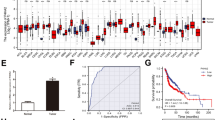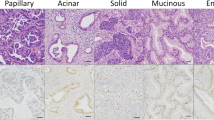Abstract
Infection with HPV virus and exposure to extrinsic carcinogens are the main causative factors for oropharyngeal squamous cell carcinoma (OPSCC). While HPV-related OPSCC typically shows a better prognosis and may be a candidate for de-intensification therapy, there is a subset of HPV-related cancers that show aggressive phenotype with frequent metastatic spread. The identification and refinement of molecular markers can better serve for prediction of prognosis and thus improve treatment decisions and outcome. We conducted a systematic review according to the PRISMA guidelines of all relevant studies addressing novel biomarkers in publications prior to July 2021. We identified studies that evaluated the association between molecular markers and prognosis in HPV-positive OPSCC. Full-text publications were entirely reviewed, classified, and selected if a clear predictive/prognostic value was seen in patients with HPV-positive OPSCC. Furthermore, a functional analysis of the target genes was conducted to understand biological processes and molecular pathways impacting on HPV-positive OPSCC outcomes. The systematic review yielded a total of 14 studies that matched the inclusion and exclusion criteria. Differential expression was identified for 31 different biomarkers. The first common pattern identified was the association of HPV-related circulating antibodies to activated immune function. Second, gene–gene interaction analysis further identified interacting gene networks tightly implicated in hypoxia tumor metabolism including the Warburg effect. Survival in HPV-positive OPSCC can be predicted by distinct selective biomarkers mainly indicative of immune host response and oxidative metabolism. Among these markers, some were identified to be unsuitable for HPV-positive de-escalation trials aimed at improving patients’ quality of life.

reproduced from Moher, Preferred reporting items for systematic reviews and meta-analyses: the PRISMA statement; published by PLoS Med., 2009 [18]



Similar content being viewed by others
References
ML Gillison 2004 Human papillomavirus-associated head and neck cancer is a distinct epidemiologic, clinical, and molecular entity Seminars Oncol 34 744 754
KB Pytynia KR Dahlstrom EM Sturgis 2014 Epidemiology of HPV-associated oropharyngeal cancer Oral Oncol 50 5 380 386
CR Leemans BJ Braakhuis RH Brakenhoff 2011 The molecular biology of head and neck cancer Nat Rev Cancer 11 1 9 22
AC Nichols 2019 Radiotherapy versus transoral robotic surgery and neck dissection for oropharyngeal squamous cell carcinoma (ORATOR): an open-label, phase 2, randomised trial Lancet Oncol 20 10 1349 1359
G Morand 2016 Survival and quality of life in oropharyngeal cancer patients treated with primary chemoradiation after salivary gland transfer J Laryngol otol 130 8 755
DF Roden D Schreiber B Givi 2017 Triple-modality treatment in patients with advanced stage tonsil cancer Cancer 123 17 3269 3276
CA Fischer 2010 Is the improved prognosis of p16 positive oropharyngeal squamous cell carcinoma dependent of the treatment modality? Int J Cancer 126 5 1256 1262
KK Ang 2010 Human papillomavirus and survival of patients with oropharyngeal cancer N Engl J Med 363 1 24 35
ML Gillison 2019 Radiotherapy plus cetuximab or cisplatin in human papillomavirus-positive oropharyngeal cancer (NRG Oncology RTOG 1016): a randomised, multicentre, non-inferiority trial The Lancet 393 10166 40 50
H Mehanna 2019 Radiotherapy plus cisplatin or cetuximab in low-risk human papillomavirus-positive oropharyngeal cancer (De-ESCALaTE HPV): an open-label randomised controlled phase 3 trial The Lancet 393 10166 51 60
N Sadeghi 2020 Neoadjuvant chemotherapy followed by surgery for HPV-associated locoregionally advanced oropharynx cancer Head Neck 42 2145
N Sadeghi 2016 Neoadjuvant chemotherapy and transoral surgery as a definitive treatment for oropharyngeal cancer: a feasible novel approach Head Neck 38 12 1837 1846
GC Iorio 2021 Decreasing treatment burden in HPV-related OPSCC: A systematic review of clinical trials Crit Rev Oncol Hematol 160 103243
EO Bigelow TY Seiwert C Fakhry 2020 Deintensification of treatment for human papillomavirus-related oropharyngeal cancer: Current state and future directions Oral Oncol 105 104652
SH Huang 2012 Atypical clinical behavior of p16-confirmed HPV-related oropharyngeal squamous cell carcinoma treated with radical radiotherapy Int J Radiation Oncol Biol Phys 82 1 276 283
AS Kaka 2013 Highly aggressive human papillomavirus-related oropharyngeal cancer: clinical, radiologic, and pathologic characteristics Oral Surg Oral Med Oral Pathol Oral Radiol 116 3 327 335
J Ruzevick A Olivi WH Westra 2013 Metastatic squamous cell carcinoma to the brain: an unrecognized pattern of distant spread in patients with HPV-related head and neck cancer J Neuro-Oncol 112 3 449 454
D Moher 2010 Preferred reporting items for systematic reviews and meta-analyses: the PRISMA statement Int J Surg 8 5 336 341
L Licata 2019 SIGNOR 2.0, the SIGnaling network open resource 2.0 update Nucleic Acids Res 48 D1 D504 D510
A Subramanian 2005 Gene set enrichment analysis: A knowledge-based approach for interpreting genome-wide expression profiles Proc Natl Acad Sci 102 43 15545 15550
B Biesaga 2018 Differences in the prognosis of HPV16-positive patients with squamous cell carcinoma of head and neck according to viral load and expression of P16 J Cancer Res Clin Oncol 144 1 63 73
KR Dahlstrom 2015 HPV serum antibodies as predictors of survival and disease progression in patients with HPV-positive squamous cell carcinoma of the oropharynx Clin Cancer Res 21 12 2861 2869
S Dogan 2019 Identification of prognostic molecular biomarkers in 157 HPV-positive and HPV-negative squamous cell carcinomas of the oropharynx Int J Cancer 145 11 3152 3162
GJ Hanna 2018 Improved outcomes in PI3K-pathway-altered metastatic HPV oropharyngeal cancer JCI insight https://doi.org/10.1172/jci.insight.122799
L Jouhi 2017 Toll-like receptor 5 and 7 expression may impact prognosis of HPV-positive oropharyngeal squamous cell carcinoma patients Cancer Immunol, Immunother 66 12 1619 1629
M Kano 2019 Expression of estrogen receptor alpha is associated with pathogenesis and prognosis of human papillomavirus-positive oropharyngeal cancer Int J Cancer 145 6 1547 1557
SS Khwaja 2016 High E6 gene expression predicts for distant metastasis and poor survival in patients with HPV-positive oropharyngeal squamous cell carcinoma Int J Radiation Oncology Biology Physics 95 4 1132 1141
JS Lewis Jr 2010 p16 positive oropharyngeal squamous cell carcinoma: an entity with a favorable prognosis regardless of tumor HPV status Am J Surg Pathol 34 8 1088 1096
Y Li 2017 E2F transcription factor 2 variants as predictive biomarkers for recurrence risk in patients with squamous cell carcinoma of the oropharynx Mol Carcinog 56 4 1335 1343
K Oguejiofor 2017 Distinct patterns of infiltrating CD8+ T cells in HPV+ and CD68 macrophages in HPV-oropharyngeal squamous cell carcinomas are associated with better clinical outcome but PD-L1 expression is not prognostic Oncotarget 8 9 14416
K Oguejiofor 2015 Stromal infiltration of CD8 T cells is associated with improved clinical outcome in HPV-positive oropharyngeal squamous carcinoma Br J Cancer 113 6 886 893
MM Rietbergen 2014 Cancer stem cell enrichment marker CD98: a prognostic factor for survival in patients with human papillomavirus-positive oropharyngeal cancer Eu J Cancer 50 4 765 773
EA Smith 2017 DEK associates with tumor stage and outcome in HPV16 positive oropharyngeal squamous cell carcinoma Oncotarget 8 14 23414
M Ward 2014 Tumour-infiltrating lymphocytes predict for outcome in HPV-positive oropharyngeal cancer Br J cancer 110 2 489 500
H Mirghani 2015 Treatment de-escalation in HPV-positive oropharyngeal carcinoma: ongoing trials, critical issues and perspectives Int J Cancer 136 7 1494 1503
LF Tremble 2020 Differential association of CD68+ and CD163+ macrophages with macrophage enzymes, whole tumour gene expression and overall survival in advanced melanoma Br J Cancer 123 10 1553 1561
C Wei 2019 Crosstalk between cancer cells and tumor associated macrophages is required for mesenchymal circulating tumor cell-mediated colorectal cancer metastasis Mol Cancer 18 1 64
SD Silva da 2021 Co-Overexpression of TWIST1-CSF1 is a common event in metastatic oral cancer and drives biologically aggressive phenotype Cancers 13 1 153
J Mims 2015 Energy metabolism in a matched model of radiation resistance for head and neck squamous cell cancer Radiation Res 183 3 291 304
JC Fleming 2019 HPV, tumour metabolism and novel target identification in head and neck squamous cell carcinoma Br J Cancer 120 3 356 367
CM Paulos 2007 Toll-like receptors in tumor immunotherapy Clin Cancer Res 13 18 5280 5289
D Bruni HK Angell J Galon 2020 The immune contexture and Immunoscore in cancer prognosis and therapeutic efficacy Nat Rev Cancer 20 11 662 680
B Burtness 2019 Pembrolizumab alone or with chemotherapy versus cetuximab with chemotherapy for recurrent or metastatic squamous cell carcinoma of the head and neck (KEYNOTE-048): a randomised, open-label, phase 3 study Lancet 394 1915 1928
GB Morand 2020 Histometabolic tumor imaging of hypoxia in oral cancer: clinicopathological correlation for prediction of an aggressive phenotype Front Oncol https://doi.org/10.3389/fonc.2020.01670
GB Morand 2018 Maximum standardized uptake value (SUV(max)) of Primary tumor predicts occult neck metastasis in oral cancer Sci Rep 8 1 11817
E Hanns 2015 Human Papillomavirus-related tumours of the oropharynx display a lower tumour hypoxia signature Oral Oncol 51 9 848 856
SN Boyer DE Wazer V Band 1996 E7 protein of human papilloma virus-16 induces degradation of retinoblastoma protein through the ubiquitin-proteasome pathway Cancer Res 56 20 4620 4624
A Cruz-Gregorio 2021 Lipid metabolism and oxidative stress in HPV-related cancers Free Radical Biol Med 172 226 236
AL Simons 2007 2-Deoxy-D-glucose combined with cisplatin enhances cytotoxicity via metabolic oxidative stress in human head and neck cancer cells Cancer Res 67 7 3364 3370
LO Klotz 2015 Redox regulation of FoxO transcription factors Redox Biol 6 51 72
AH Tseng SS Shieh DL Wang 2013 SIRT3 deacetylates FOXO3 to protect mitochondria against oxidative damage Free Radic Biol Med 63 222 234
N Takao Y Li K Yamamoto 2000 Protective roles for ATM in cellular response to oxidative stress FEBS Lett 472 1 133 136
C Cosentino D Grieco V Costanzo 2011 ATM activates the pentose phosphate pathway promoting anti-oxidant defence and DNA repair Embo j 30 3 546 555
MJ Halaby 2008 ATM protein kinase mediates full activation of Akt and regulates glucose transporter 4 translocation by insulin in muscle cells Cell Signal 20 8 1555 1563
P Bossi 2016 Prognostic and predictive value of EGFR in head and neck squamous cell carcinoma Oncotarget 7 45 74362 74379
EL Göttgens 2019 HPV hypoxia and radiation response in head and neck cancer Br J Radiol 92 1093 20180047
N Lee 2016 Strategy of using intratreatment hypoxia imaging to selectively and safely guide radiation dose de-escalation concurrent with chemotherapy for locoregionally advanced human papillomavirus-related oropharyngeal carcinoma Int J Radiat Oncol Biol Phys 96 1 9 17
Lekanne dit Deprez LW, 2021 SUVmax for predicting regional control in oropharyngeal cancer Eur Arch Otorhinolaryngol https://doi.org/10.1007/s00405-021-07169-7
Acknowledgements
This study was supported by FRQ-S/RSBO#35376 (258000 and 258259) and CIHR-NCOHR (New Frontier Seed Grant 2020-2022).
Author information
Authors and Affiliations
Corresponding author
Ethics declarations
Conflict of interest
No potential conflicts of interest were disclosed.
Additional information
Publisher's Note
Springer Nature remains neutral with regard to jurisdictional claims in published maps and institutional affiliations.
Supplementary Information
Below is the link to the electronic supplementary material.
Rights and permissions
About this article
Cite this article
Morand, G.B., Diaconescu, A., Ibrahim, I. et al. Molecular prognostic indicators in HPV-positive oropharyngeal cancer: an updated review. Clin Exp Metastasis 39, 407–416 (2022). https://doi.org/10.1007/s10585-022-10148-9
Received:
Accepted:
Published:
Issue Date:
DOI: https://doi.org/10.1007/s10585-022-10148-9




